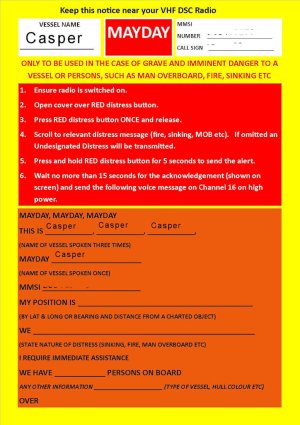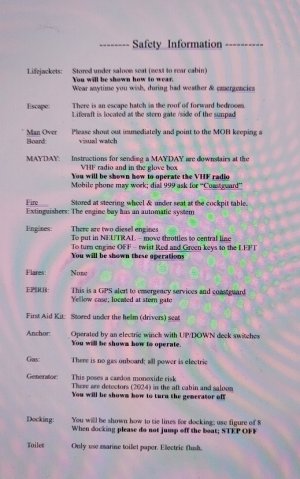KevinV
Well-Known Member
The "too much" wasn't really aimed at your card JFM (and yes, the pictures DO help!), but at Bluetooth talking about adding in manoeuvres , using dangerous equipment and suchlike. The only thing I'd take off your card is the MMSI and callsign - they're of really limited use to anyone, let alone a novice, and just overcomplicate things. I can see why they'd be on there to please a surveyor thoughI totally agree your information overload point and would readily admit that the PDF I posted above probably fails that test. As i said it was intended merely as some inspiration, not as gospel. FWIW, that card is 10 years old and was partly done to keep a surveyor happy (eg the Muster Station bit, which I would prefer to leave out on a small boat). But you're right that less might be better in many circumstances.
I'm pretty sure that pictures are helpful. The airline seatback safety cards are some inspiration in all this.


